Of the Trochlear nerve is the fourth cranial nerve and motor innervates the superior oblique muscle. Together with the oculomotor nerve and the abducens nerve, it is involved in the movement of the eyeball. Double vision occurs when the nerve is paralyzed.
What is the trochlear nerve?
Cranial nerves are nerves with a direct origin in the specialized nerve cell clusters, the so-called cranial nerve nuclei, of the brain or the brain stem. Except for the cranial nerves, all other body nerves originate in the spinal cord.
Cranial nerves carry fiber qualities from somatosensitive to vegetative and somatomotoric. The somatomotor nerve fibers innervate muscles and organs and thus give them the opportunity to move freely. All somatomotric fibers are efferent nerves. One of the somatomotric cranial nerves is the fourth cranial nerve called the trochlear nerve. Together with the oculomotor nerve and the abducens nerve, it enables the eyeball to move.
The trochlear nerve arises as the only cranial nerve on the dorsal side of the brain and has its origin caudal to the inferior colliculi within the tectum in the mesencephalon. Like all motor nerves, it not only contains motor fibers, but also sensitive fibers for proprioception of the supplied muscles. Its supply area is the contralateral side of the superior oblique muscle.
The tendon of this muscle is deflected by roll cartilage within the eye socket. This roll cartilage is known as the trochlea and gave the trochlear nerve its name.
Anatomy & structure
The cranial nerve nucleus of the trochlear nerve corresponds to the trochlear nucleus and is located in the midbrain. Since the nerve is the only cranial nerve that emerges dorsally from the brain stem, it crosses into the dorsal trochearic chiasm after exiting to the other side. In humans, the nerve leaves the cranial cavity at the superior orbital fissure.
The somatomotor nerve is notable in many ways. For example, it is the weakest cranial nerve when it comes to the number of axons involved. In addition, of all the cranial nerves, the nerve has the longest course within the skull. After the dorsolateral rupture of the dura mater, the course in the lateral wall of the cavernous sinus and the passage through the superior orbital fissure, the nerve in the eye socket runs laterally and cranially past the origin of the eye muscles, the so-called annulus tendineus communis. The nerve is connected to the motor end plate of the superior oblique muscle and at this point transmits motor impulses from the central nervous system to the muscle.
Function & tasks
The trochlear nerve moves the eyeball together with the oculomotor and abducens nerves. The precise and extensively targeted movement of the eyeball is only possible thanks to the interaction of the three nerves. If one of the three nerves fails, eye movement is completely out of balance due to the failure of the paralyzed eye muscle and visual perception is difficult.
The motor fibers of the trochlear nerve are responsible for the transmission of centrally issued commands. They take care of the transmission of commands in the form of excitation at the motor end plate of the superior oblique muscle. In this way, the muscle fibers of the muscle are stimulated to contract, so that the eyeball moves.
The sensitive fibers of the somatomotor nerve carry sensations from the muscle to the central nervous system. This process is essential for targeted muscle movements with adequate contraction force, since the nervous system cannot adequately assess the current state of contraction of the muscle without this feedback.
The stimuli from the muscle are registered by receptors, the so-called proprioceptors, such as the muscle spindles and the Golgi tendon organ. Since the sensitive conductive fibers transport excitation towards the central nervous system, they are also referred to as afferent fibers. With its efferent fibers, the trochlear nerve is essentially involved in voluntary movements of the eyeball, while with its afferent fibers it is involved in deep sensitivity in the area of the superior oblique muscle.
The movement of the eyeball is also relevant for humans, as an eye-controlled living being, from an evolutionary perspective. According to evolutionary biologists, the visual perception of the human species in early times enabled the most reliable assessment of dangers in the environment and thus steered reactions to the environment far more than the other perceptual instances.
You can find your medication here
➔ Medicines for visual disturbances and eye complaintsDiseases
Trochlear palsy can occur if the trochlear nerve is damaged.This is a loss of function of the contralateral part of the superior oblique muscle. Since the nerve is not the only nerve that enables the eyeball to move, such paralysis is not accompanied by a complete loss of mobility.
Nonetheless, symptoms that impair vision appear. Those affected squint and see double vision for this reason. Movement of the eyeball becomes restricted because the affected eye deviates upwards after paralysis of the nerve, which is also known as hypertrophy. At the same time, the eye turns inward, causing an esotropy. In the sagittal axis, the eye rolls outwards and thus causes an excyclotropy. The vertical double images arise mainly when trying to look to the lower opposite side. In order to alleviate the symptoms, the patient usually tilts his head to compensate for it on the healthy side, so that an ocular torticollis arises.
If there is isolated one-sided damage to the supplying cranial nerve nucleus, the muscle on the opposite side is affected by the paralysis due to the junction shortly after the nerve pathways exit.

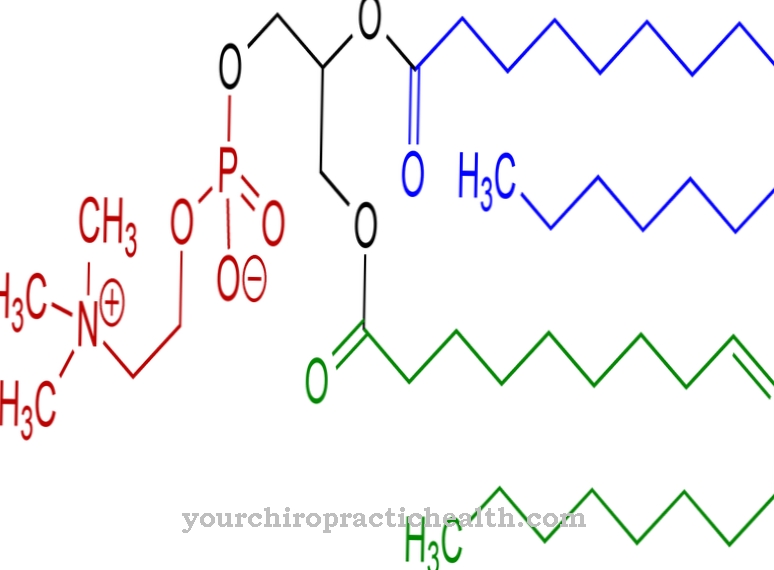
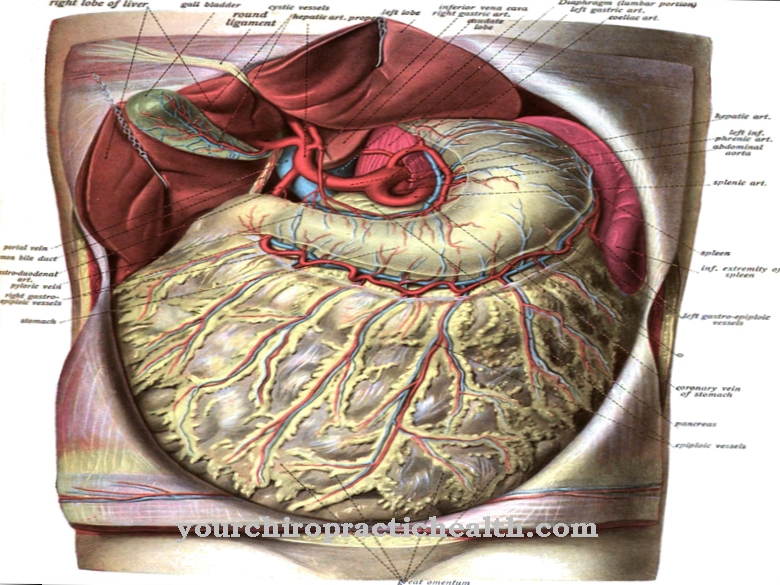
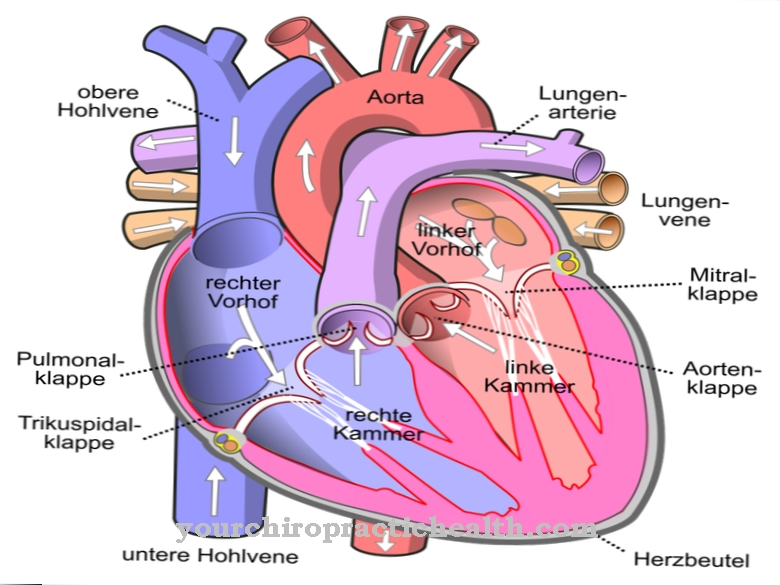
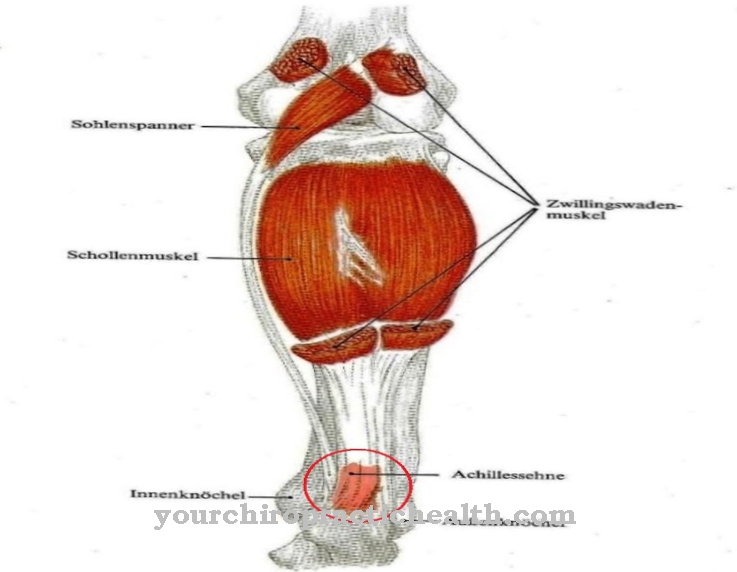
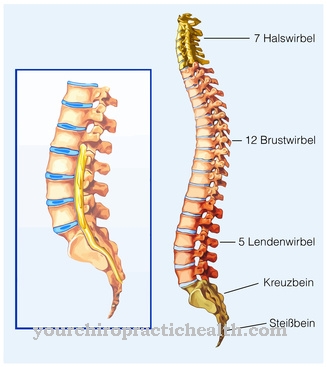
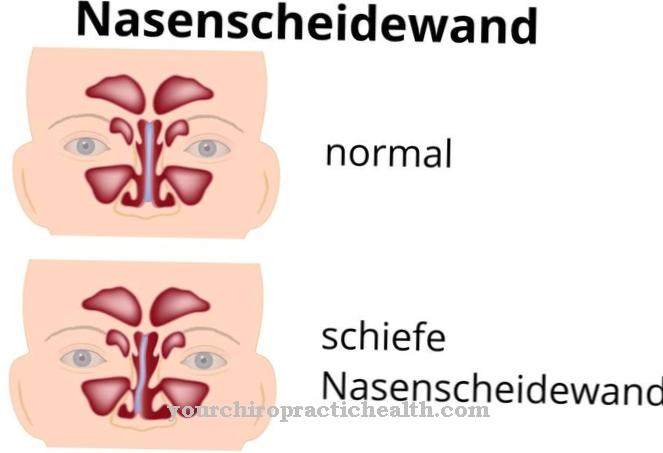






.jpg)

.jpg)
.jpg)











.jpg)